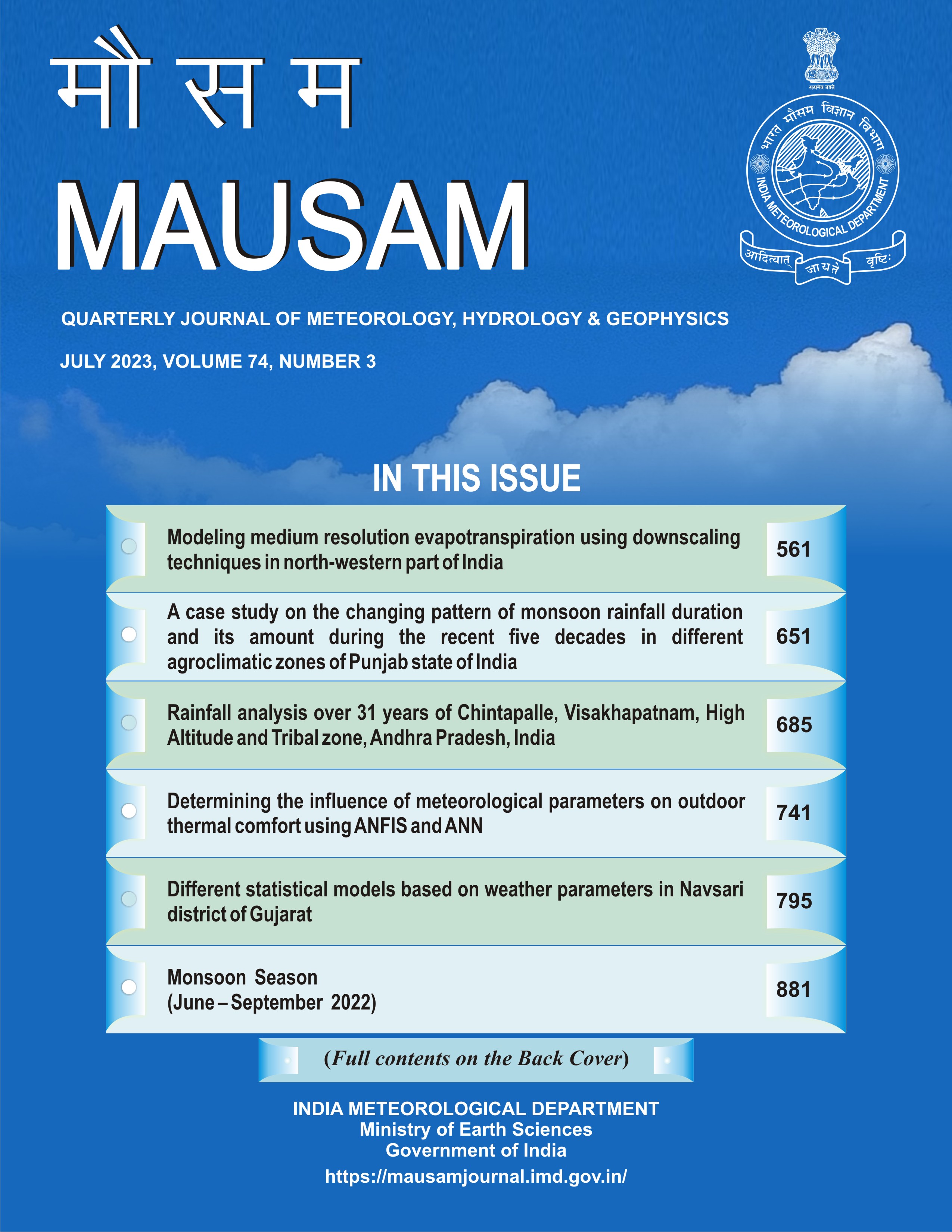A Geographic Information System (GIS) based approach for drainage and morphometric characterization of Beki river basin, India
DOI:
https://doi.org/10.54302/mausam.v74i3.5608Keywords:
Morphology, GIS, Satellite images, Remote sensingAbstract
Geographic Information Systems and remote sensing, have proved to be efficient tools in delineation of drainage pattern and different geometric methodology of geomorphologic, watershed management even GIS has been widely used in several flood management, and environmental applications. The river Beki with an area of 19,354.35 sq.km2 originates at Himalayan glacier (Kula Kangri glacier in Bhutan) 26.18° N latitudes and 90.53° E longitudes and flows though the plains of Assam and finally to the mighty Brahmaputra at 26.48° N latitudes and 91.02° E longitudes has been selected for detailed morphometric analysis. Morphometric parameters via; Stream order, Stream length, Bifurcation ratio, Drainage density, Drainage frequency, Drainage texture, Form factor, Circularity ratio, Elongation ratio and Compactness ratio etc. were measured for prioritization and compound parameter values were calculated. This study will help the local people to utilize the resources in right manner for Sustainable Water Resource Development of the Basin area. Moreover, the study can also be referred as a benchmark for studies on temporal change in geomorphology due to climate change. Different Morphometric analysis provides the explanation of physical characteristics of the watershed which are useful for the areas of land use planning, soil conservation, terrain elevation and soil erosion.
Downloads
Published
How to Cite
Issue
Section
License
Copyright (c) 2023 MAUSAM

This work is licensed under a Creative Commons Attribution-NonCommercial 4.0 International License.
All articles published by MAUSAM are licensed under the Creative Commons Attribution 4.0 International License. This permits anyone.
Anyone is free:
- To Share - to copy, distribute and transmit the work
- To Remix - to adapt the work.
Under the following conditions:
- Share - copy and redistribute the material in any medium or format
- Adapt - remix, transform, and build upon the material for any purpose, even
commercially.



